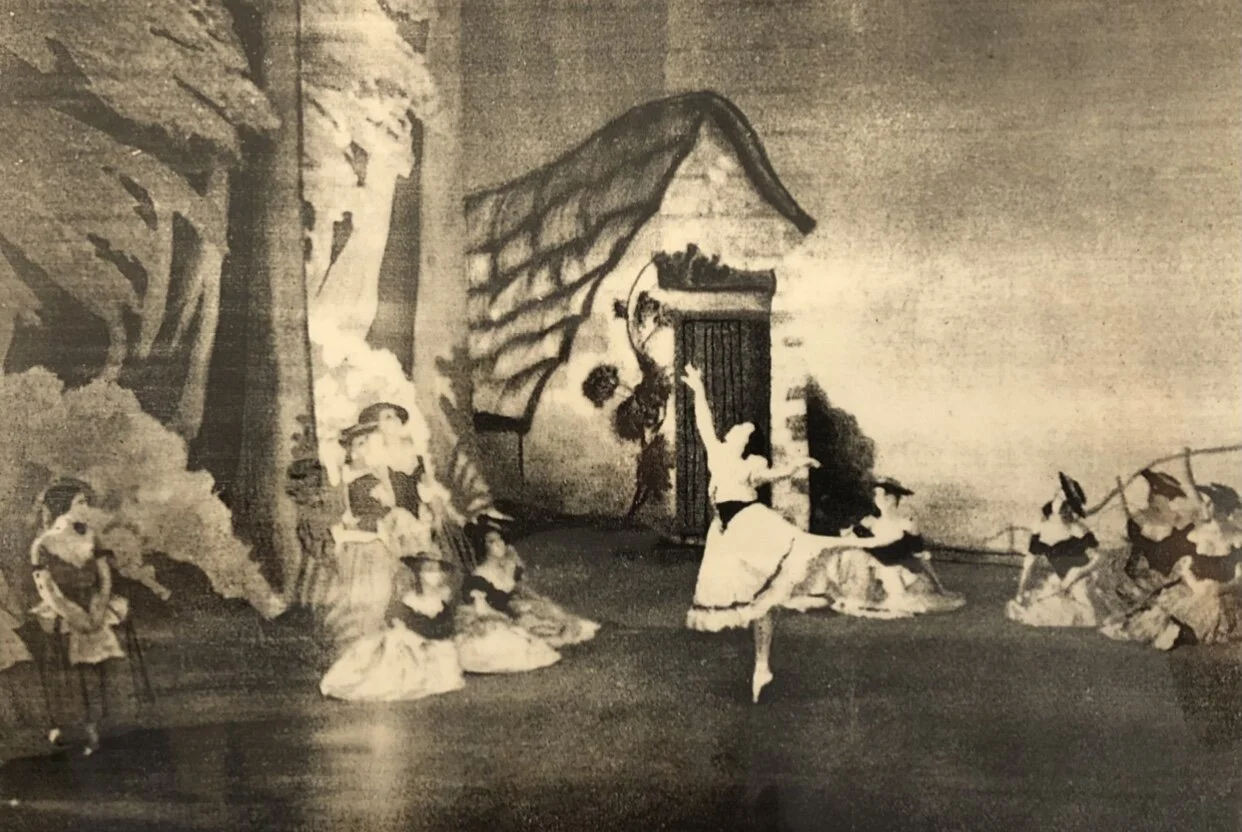The opening arabesque of Giselle’s Act One variation: Olga Spessivtseva, Alicia Markova, Margot Fonteyn.
1, 2, 3. Here’s a nice question for those interested in “Giselle”: With what arms should Giselle take the opening piquée arabesque of her Act One variation? Here are Olga Spessivtseva (1) in 1932 with arms en couronne (taken from live film footage), Margot Fonteyn (2) in 1937 with arms en couronne, and Alicia Markova (3) in c.1937 with arms raised but parted in first arabesque.
Fonteyn learnt Giselle from watching Markova at Sadler’s Wells. Markova in turn had learnt it at the Wells in 1934 from Nicholas Sergueyev, and from watching Olga Spessivtseva at the Savoy Theatre in 1932, in a production that Sergueyev had also supervised. Spessivtseva was indubitably the ballerina whom Markova admired most; she referred back to her throughout her career. Markova was the exemplary marvel who inspired the young Fonteyn, who was educated never to change any choreographic detail. So, amid this tight daisy chain of performing tradition, why is Fonteyn using a different position of the arms from Markova? And why is Markova using a different position of the arms from Spessivtseva?
To complicate the matter, today’s “Giselle” tradition is divided. Russian Giselles and many others dance the arabesque with first-arabesque arms à la Markova. Most Royal Giselles, and some other Western interpreters, dance it with arms en couronne. Markova, famously, identified with the role of Giselle, writing an autobiographical “Giselle and I” after she had danced the role over twenty years. Fonteyn, however, danced the role for thirty-three years, never deviating from that en couronne position.
It used to be widely believed that this variation was added to “Giselle” for Spessivtseva. Possibly this means that it hadn’t been danced in the West by either Tamara Karsavina or Anna Pavlova, the West’s two foremost pre-Spessivtseva Giselles. Nonetheless we now know, as Nicholas Sergueyev must have known, that the variation had been notated, step for step, in the 1903 St Petersburg performance of Pavlova. The music had been added in the late nineteenth century (scholars vary on who composed it and which Giselle first danced it), but it could be that the version of the steps notated with Pavlova was one that Marius Petipa had newly revised to suit her, a young ballerina who fascinated and inspired him. But the notation does not tell us about Giselle’s arms.
I think we can tell what happened, however. The arms en couronne, perfect for the music in catching the chord’s Romantic staccato emphasis, make this like no other ballerina arabesque, whereas the first-arabesque arms are all too close to those with which Aurora (“The Sleeping Beauty”) takes her own piquée arabesque in her own first-act variation. We can be pretty sure that Sergueyev taught the same arms to all three ballerinas. But Markova, on leaving the Vic-Wells Ballet, restudied the role of Giselle with Bronislava Nijinska when dancing the role with the Markova-Dolin Ballet.
There is, however, another puzzle. The silent film of Spessivtseva’s Giselle (Act One only) runs at double speed, but is frequently discussed to show what a technical and stylistic phenomenon she was. Yes, but what’s also startling is the brusque impulsiveness with which she dances, as if improvising steps as they enter her head, in a stream of consciousness. Was this part of Spessivtseva’s own genius? Or was it part of the way that other ballerinas danced these roles?
Spessivtseva, in her day, was notoriously unmusical, but most people forgave her because she was otherwise perfect. (Ninette de Valois, always schoolmistressy, complained to Ashton “I don’t like that Spessivtseva of yours - she’s not musical.” Ashton, who played Hilarion to Spessivtseva - as he subsequently did to Markova and Fonteyn - replied “All your English girls are musical - and none of them is Spessivtseva!”) When you watch the film of Spessivtseva’s Giselle, though, you see she is not artfully dragging out any tempo - she’s astoundingly impulsive, as if she herself was the only music. Hers is a kind of dancing we’ve never seen again.
Sunday 1 August
1: Olga Spessivtseva as seen on live 1932 film of “Giselle” at the Savoy Theatre. (Image flipped.)
2: Margot Fonteyn as Giselle in 1937. Studio photograph by Gordon Anthony. Thirty years later, Fonteyn was dancing Giselle with the same arms, as photographs show.
3: Alicia Markova dancing Giselle with the Markova-Dolin Ballet, 1935-1937. (Image flipped.)


